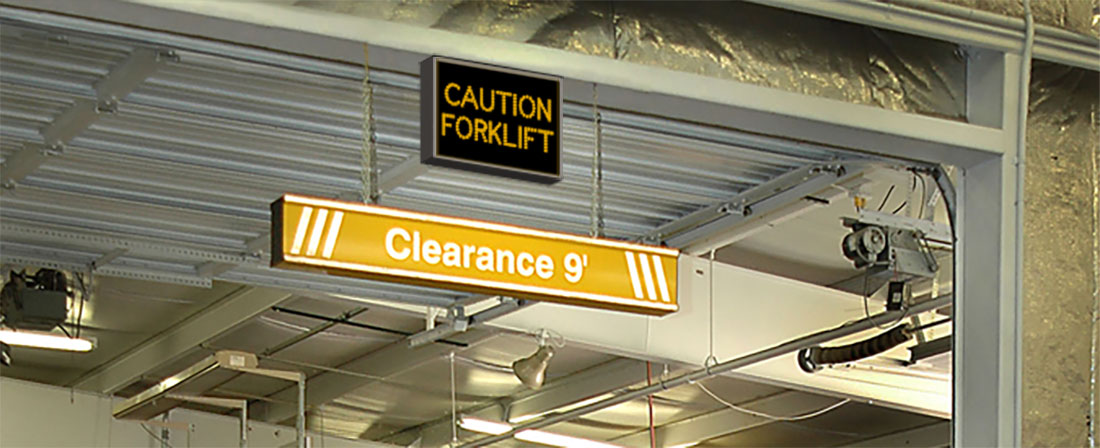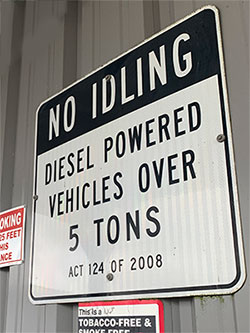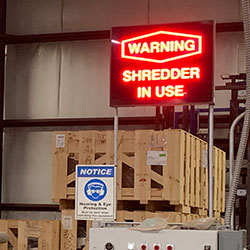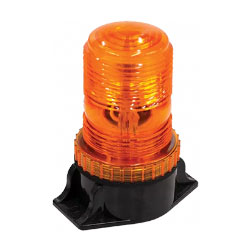- Products
- Accessories
- Stock Products
- Industry
- Information Center
- Login/Register
- Contact Us
Aug 17, 2022

The signage at your business is one of your most important assets; it tells customers and visitors where you are, who you are, and in many cases, what you do. But beyond these vital, surface-level aspects, signage plays a critical role in keeping your workforce and the visitors of your business safe. This article will discuss traditional signage and light-up signage, the benefits of both, and how implementing illuminated signage is an excellent way to bolster safety.

Traditional, non-illuminated signs are constructed with the same materials as their illuminated counterparts, typically metals, plastics, and acrylics. They don’t require any power source — internal, such as solar-powered batteries, or external, such as wires run through conduit — to operate and don’t have an internally based light source. That doesn’t mean traditional signage can’t be lit; an external light, such as a spotlight, must be used to brighten the sign. Further, the ability of conventional signage to garner attention can be enhanced by using contrasting colors (white signs with black messaging, red signs with white messaging, etc.) and reflective films to enhance nighttime visibility.
Inherent benefits of traditional signage include:

Illuminated signs come in many forms — scrolling digital displays, monument signs, direct view blank-out signs, backlit blank-out signs, fully illuminated MUTCD signs, traffic controllers, and even full-color billboards and scoreboards, to name a few. Each type of sign has a power source (either internal or external) and an internal light source. Manufacturers use various lighting materials to illuminate the sign, including fluorescent bulbs, incandescent bulbs, neon bulbs, or light-emitting diodes (LEDs). Signal-Tech exclusively uses LEDs for all its illuminated signs because of their numerous benefits. Speaking of benefits, below are the inherent benefits of choosing light-up signs.
With the difference between standard and light-up signs and each of their benefits clearly established, let’s examine how lighted signs (and their potential add-on components) can enhance workplace safety.
First, a workplace safety/warning sign aims to garner attention and alert passersby of potentially dangerous situations. Whether that be “X-RAY IN USE” at a hospital or healthcare facility or “WATCH FOR FORKLIFT” at a warehouse or distribution center, illuminated warning signs are better at capturing attention than printed, non-illuminated signs as human eyes are drawn to light. When a warning sign effectively and routinely captures the attention of passersby, it nearly always alerts of imminent danger, drastically reducing the likelihood of accidents and potentially devastating consequences. Illuminated signs simply do this better than non-illuminated ones.

Then, it’s important to mention again that illuminated signs have power, either from internal or external sources. Because of this, they can be equipped with auxiliary visual alerts, such as strobes and flashers, to further garner attention and enhance the sign’s warning message.
Finally, another add-on safety feature only available with illuminated signage is audio accessories. As the name implies, these provide audible warnings alerting passersby of nearby or approaching danger. Paired with a lighted sign and additional visual alerts, you can rest assured every preemptive sensory measure has been taken to avoid the 2.7 million workplace injuries that occur annually.
Are you ready to upgrade your standard, non-illuminated signs and enhance your safeguards against workplace injuries? Contact our knowledgeable sales and engineering staff anytime to discover our entire lineup of LED workplace safety and warning signs. They are happy to help you learn how they can prevent accidents and protect every business’s most valuable asset — its employees — for years to come.